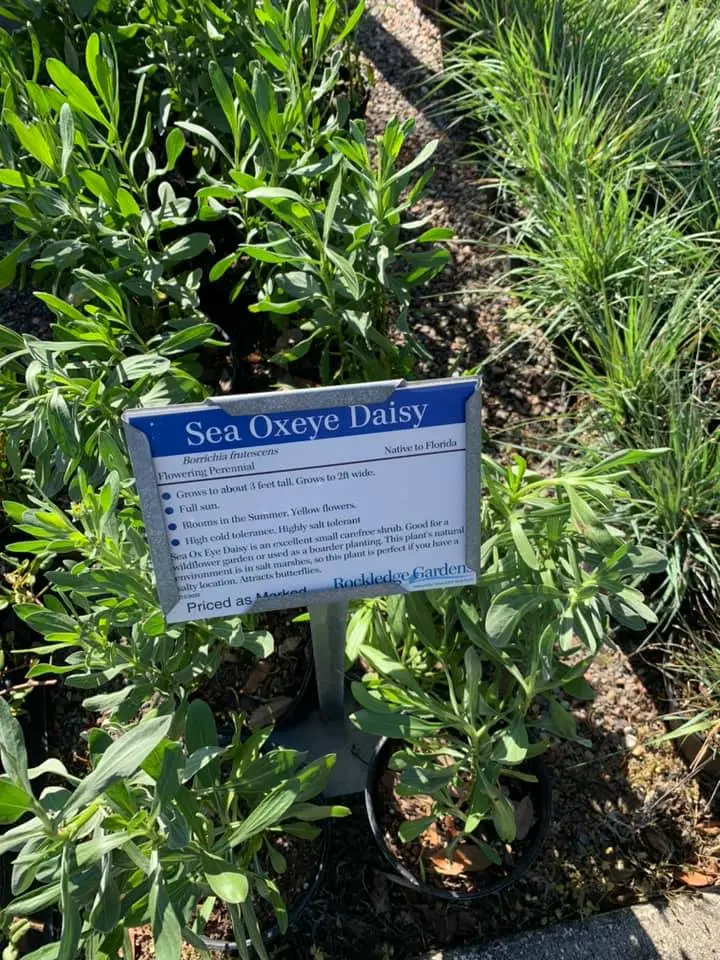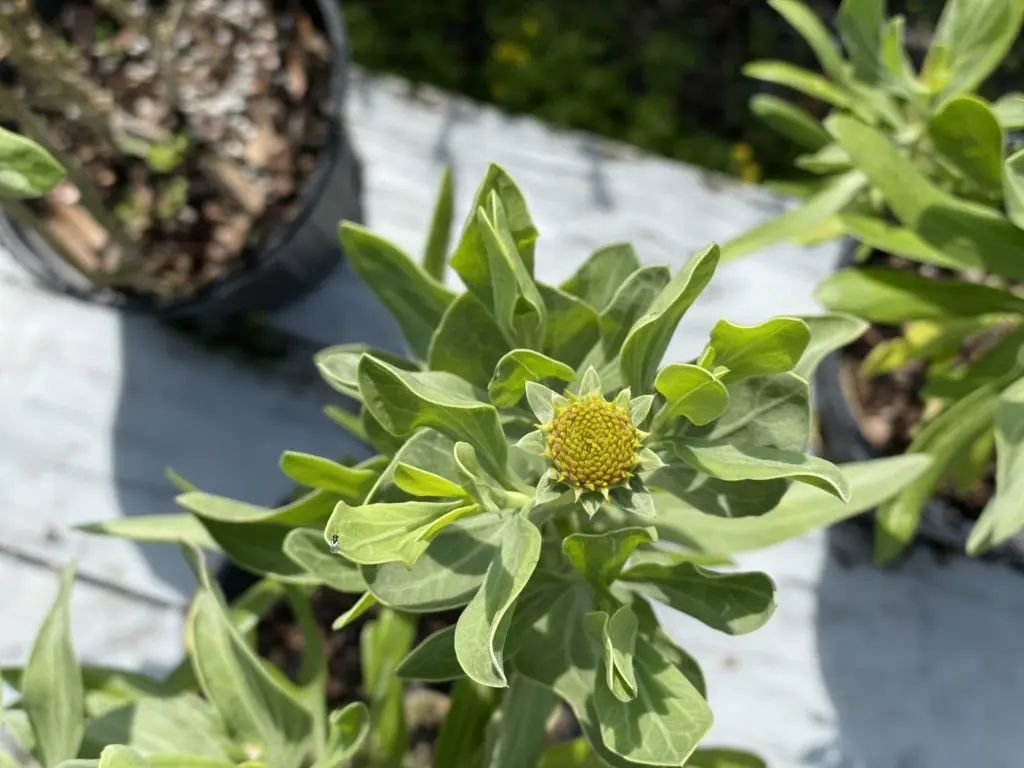by Amanda Rose Newton
Our month-long celebration of Florida native plants continues with a flower that just about every beholder finds a true beauty, the Seaside Oxeye Daisy (Borrichia frutescens).
Borrowing the wardrobe of the sunflower, this aster has the beloved bright yellow rays with deep brown summer that brings cheer to any space.
You can tell the two apart by the bushy foliage and the black anthers that lend the dark color to the center. The actual center would appear in more of an orange hue if it wasn’t for those dark brown anthers.
The bushy lanceolate-shaped leaves come in a gray-green that plays against the bright yellow remarkably well, which makes one wonder why this beauty isn’t represented more in the home landscape.
Brightening Up the Landscape
Native to the coast, this plant makes a great addition to just about any yard. Salt-tolerant, moist-loving, and adaptable to zones 8-11, there are few areas where this flower will not bloom. It also happens to be drought-tolerant and can withstand saltwater intrusion.

It mixes well with other Florida natives in a traditional flower bed, border planting, or underneath a mailbox.
Growing from a rhizome, it naturally spreads and is perfect for “lazy” gardening.
Propagation is a breeze: simply divide it, take cuttings, or collect the seeds when deadheading.
Overall, expect it to max out at about 3 feet with a spread of roughly 1 foot.
Insects, birds, and wildlife love the Oxeye!
Expect to see a variety of butterflies, bees, beetles, and bugs taking advantage of the pollen and nectar.

The seeds are favorites of smaller birds and the bushy foliage provides shelter for many small mammals. If wildlife enhancement is in your landscape plan, the seaside oxeye should be added to your list.
How to Plant
Given the versatility of the seaside oxeye, it can be planted everywhere from swales to front yards.
Because of its spreading tendency, it is recommended to space them at least 30 to 60 inches apart to ensure healthy growth. Any soil will do as it can tolerate times of flooding as well as handle the stress of droughts.
Despite growing along a rhizome, the daisy is not considered to be invasive and is easy to contain in your space of choice.
Like its doppelganger, the sunflower, the oxeye daisy requires full sun for best results. Expect the flowers to last from spring through late summer.
Seaside Daisy in Society
Ethnobotany, the fascinating look at how plants have influenced and intertwined with human culture, typically mentions the use of natives given their abundance and availability.
It is believed the oxeye was used as early medicine in tea form to treat a variety of ailments, from whooping cough to malaria.
The text Florida Ethnobotany by Daniel Austin (a must for anyone riding the cusp of both plant AND history nerd) even describes the tea used as a poison antidote by early Seminoles. The plant is edible…if you can stomach it! The leaves and bracts are edible and were traditionally used in salads.
Planting natives such as the seaside oxeye daisy serves as more than simply planting a flower; you are preserving a little piece of Florida history right in your own garden.


